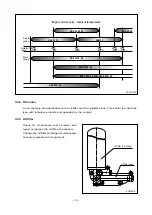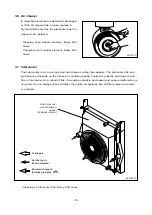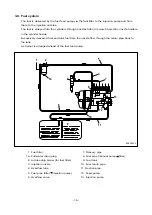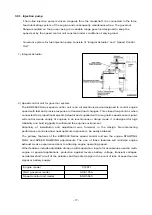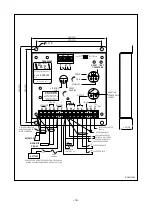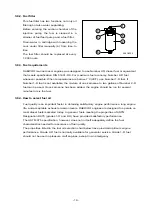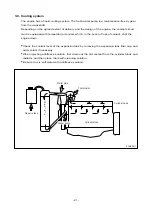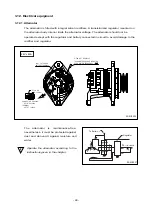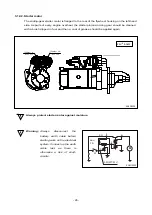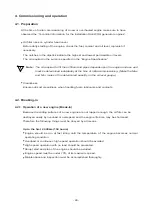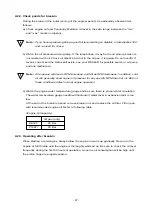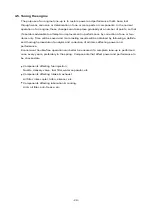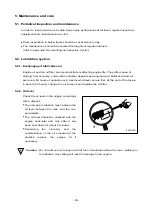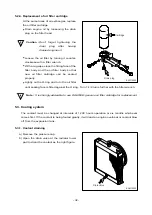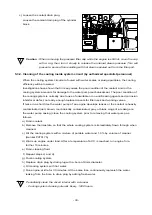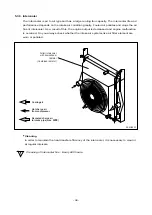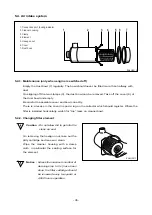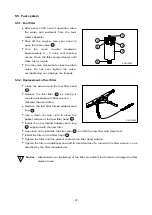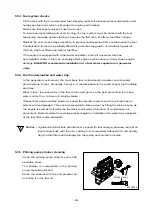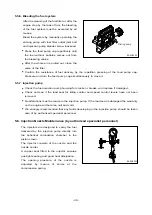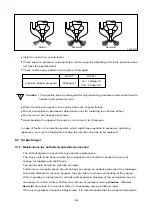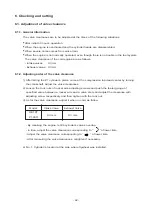
4.2.2. Check points for break-in
During the break-in (the initial running of the engine) period, be particularly observant as
follows:
a) Check engine oil level frequently. Maintain oil level in the safe range, between the “min.”
and “max.” marks on dipstick.
Note :
If you have a problem getting a good oil level reading on dipstick, rotate dipstick 180
˚
and re-insert for check.
b) Watch the oil pressure warning lamp. If the lamp blinks, it may be the oil pick-up screen is
not covered with oil. Check oil dipstick. Add oil to the oil pan, if required. Do not overfill. If
level is correct and the status still exists, see your DEALER for possible switch or oil pump
and line malfunction.
Note :
Oil pressure will rise as RPM increases, and fall as RPM decreases. In addition, cold
oil will generally show higher oil pressure for any specific RPM than hot oil. Both of
these conditions reflect normal engine operation.
c) Watch the engine water temperature gauge and be sure there is proper water circulation.
The water temperature gauge needle will fluctuate if water level in expansion tank is too
low.
At the end of the break-in period, remove break-in oil and replace the oil filter. Fill oil pan
with recommended engine oil. Refer to following table.
<Engine Oil capacity>
4.2.3. Operating after break-in
When starting a cold engine, always allow the engine to warm up gradually. Never run the
engine at full throttle until the engine is thoroughly warmed up. Be sure to check the oil level
frequently during the first 50 hours of operation, since the oil consumption will be high until
the piston rings are properly seated.
- 27 -
Oil pan (only)
DE12T
23 liter
P126TI
23 liter


